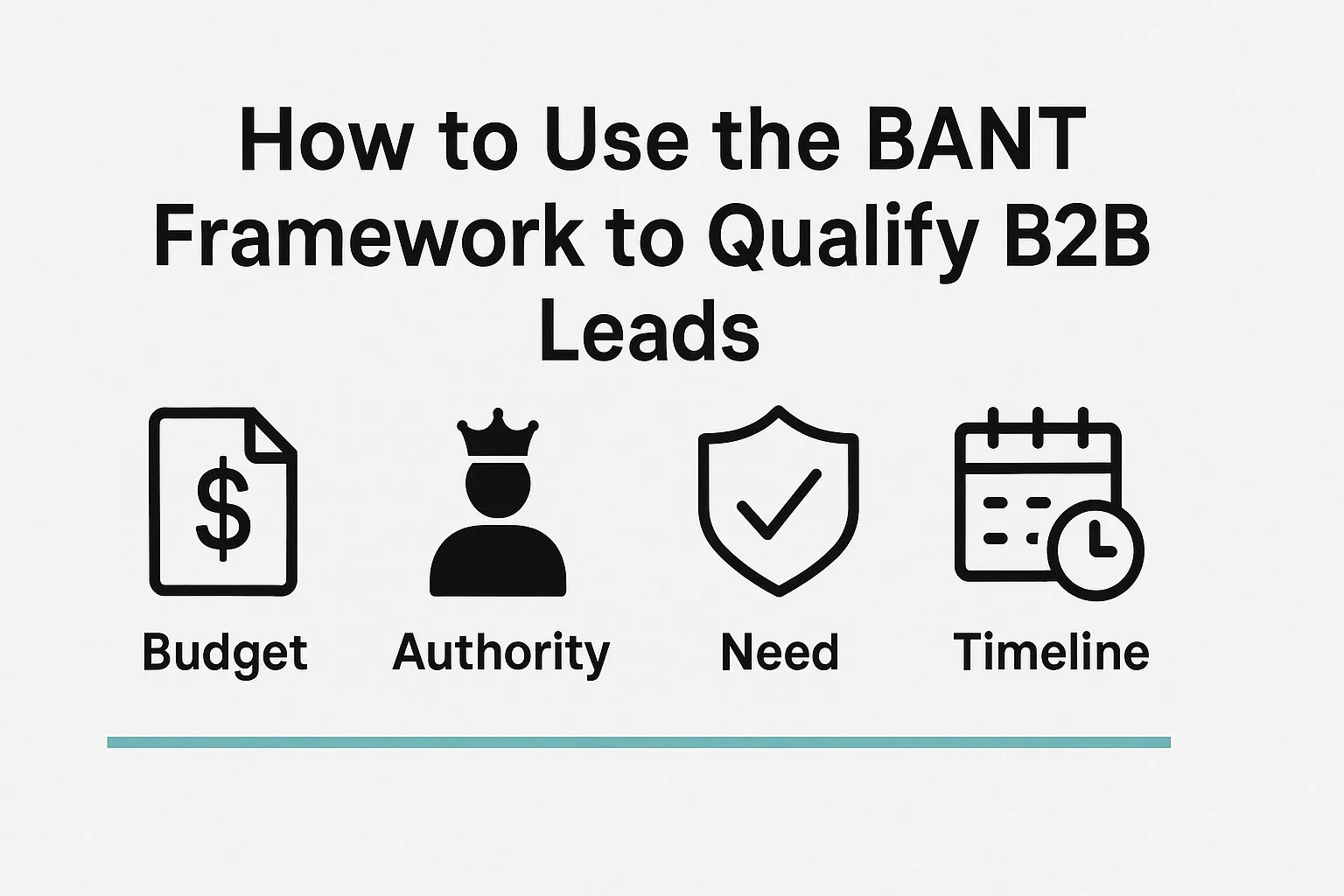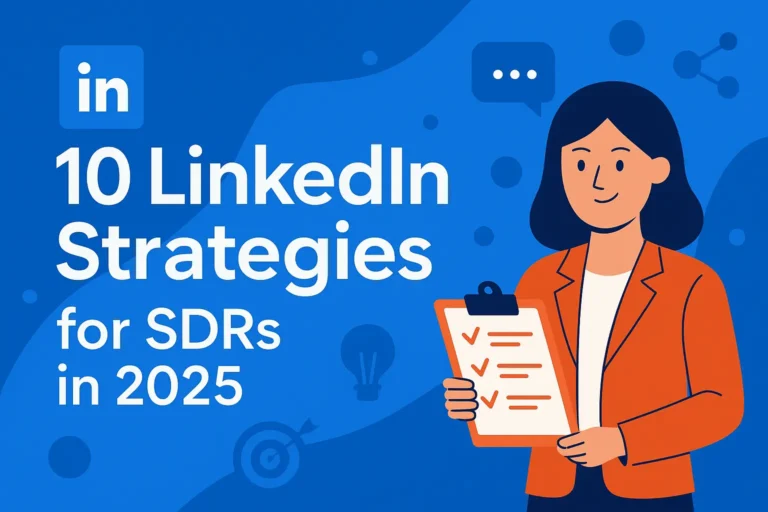How to Use the BANT Framework to Qualify B2B Leads
Most B2B sales reps love chasing leads.
But chasing the wrong leads? That’s how you waste six months and still miss quota.
That’s where qualification frameworks come in — and BANT is still one of the simplest, most practical ones out there.
No gimmicks. No complicated scoring models.
Just four things every real buyer needs before they’re actually a real opportunity.
Let’s break it down without the usual buzzwords.
First, What Even is BANT?
BANT stands for:
- Budget – Can they afford what you’re selling?
- Authority – Are you talking to the person who can say yes?
- Need – Do they actually need what you’re offering?
- Timeline – When would they even be ready to move forward?
It sounds basic — because it is.
But the number of deals that die because one of these four boxes wasn’t checked? Way higher than most people want to admit.
Why BANT Still Works (When You Use It Properly)
Some people say BANT is “old school.” Honestly?
Those people probably aren’t closing much.
In B2B, especially with longer sales cycles and multiple stakeholders, BANT helps you avoid wasting months chasing someone who was never going to buy.
It’s not about disqualifying people harshly.
It’s about having real conversations — and figuring out if it’s worth both of your time.
If you use BANT as a guide — not a checklist — it makes your pipeline stronger, cleaner, and way less stressful.
How to Actually Use BANT in Real Conversations
This isn’t an interrogation.
You’re not rattling off “What’s your budget?” and “Are you the decision-maker?”
It’s more like steering the conversation naturally toward these answers.
Here’s how it tends to play out:
Budget: Can They Pay?
Nobody loves talking about money early.
But if you never touch the topic, you risk months of demos for a company that can’t even afford lunch, let alone your solution.
Instead of asking bluntly, you can feel it out:
- “Curious, have you set aside budget for this kind of project this year?”
- “How does budgeting for [solution] typically work on your side?”
If the answer is “We’ll have to figure it out later,” that’s a yellow flag.
Not always a dealbreaker — but something to track closely.
Authority: Are You Talking to the Right Person?
Here’s the brutal truth:
You could have the best pitch in the world — but if you’re talking to someone who can’t sign a contract, it won’t matter.
You don’t need to ask, “Are you the decision-maker?” (it sounds aggressive).
Instead, try:
- “Besides yourself, who else would need to be involved to move something like this forward?”
- “How do these kinds of decisions usually get made internally?”
This way, you’re mapping the buying process without making anyone defensive.
Need: Do They Really Have a Problem?
Sometimes, you’ll talk to prospects who are curious — but not desperate.
It’s important to figure out if the pain is real, or if they’re just window shopping.
Dig a little:
- “What’s driving the interest in [solution] now?”
- “What happens if you don’t solve this in the next six months?”
If there’s no real consequence to doing nothing, odds are this deal will stall out fast.
Timeline: Are They Ready Soon… or Someday?
Nothing kills a pipeline like leads who say “Yeah, maybe next year.”
Find out early:
- “When are you hoping to have something like this in place?”
- “Is this something for this quarter, or more long-term planning?”
If it’s a 12-month window and you’re desperate to hit this quarter’s numbers, be realistic.
Nurture — don’t chase.
Common BANT Mistakes (That Cost Deals)
Even if you get the basics down, it’s easy to slip into traps:
- Forcing the framework. BANT should flow naturally inside a conversation, not feel like a script.
- Only qualifying once. Things change. Budget disappears. Decision-makers shift. Keep checking.
- Ignoring yellow flags. If someone says “We’re figuring out funding” three months into a sales cycle, don’t pretend everything’s fine.
BANT isn’t a one-time form. It’s ongoing awareness.
Does BANT Work for Every Sale?
Mostly, yes — but with tweaks.
In very large enterprise deals, there are often multiple authorities and multiple budgets.
In early-stage deals, need might be clearer than budget at first.
It’s not about finding perfect answers to each letter.
It’s about spotting the patterns that show whether this deal has real momentum — or if it’s wishful thinking.
Final Takeaway: BANT Isn’t About Closing Faster. It’s About Closing Smarter.
Nobody loves qualifying leads.
Everyone loves closing deals.
BANT helps you stop confusing “activity” with “progress”.
It makes sure you’re spending your time with prospects who can actually buy, actually decide, and actually benefit from what you’re selling.
Simple. Not always easy. But absolutely worth it.







